Today saw us begin our timed electrofishing for the District Salmon Fishery Boards. With water levels still a little on the high side on the Ayr system we opted to begin on the Doon. With the dust brushed of the gear we headed to the bottom of the Doon on an absolute scorcher of a day. More than a few times we saw 29oC on the vans dashboard. Waders and life vests aren’t the first choice of attire on a day like that and just for once I was grateful for leaks in my waders I have yet to repair.
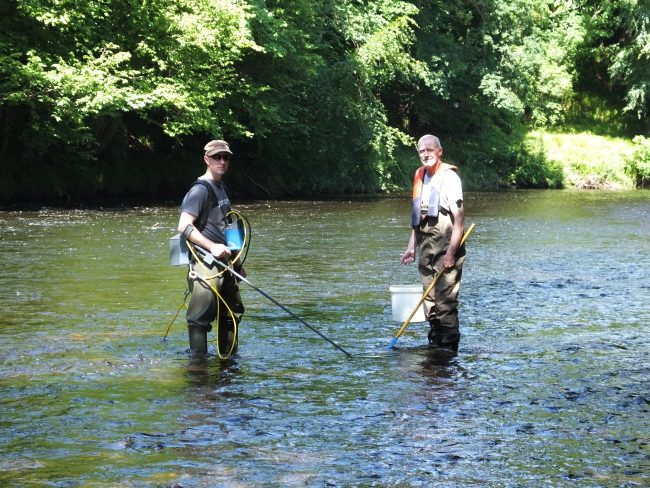 Muir and Jim seeking a little shade from the sun.
Muir and Jim seeking a little shade from the sun.
Today we were accompanied by a new volunteer to the Trust, Jim MacPherson. We are always willing to take volunteers out with us and today having Jim with us freed another staff member up allowing us to get more work done…..happy days! Electrofishing is always an interesting activity to be involved with and there is much to learn over the course of a few days.
Our timed surveys allow us to compare years of historic data from sites that are revisited each year. Timed surveys target salmon fry and are a method of quickly assessing spawning productivity from the previous winter. Of course many factors will effect the numbers of juvenile salmon we find during these surveys e.g. numbers of returning adult salmon, spawning conditions (water levels, temperatures etc.), weather over winter (high flows can cause redd washout and hamper spawning activity).
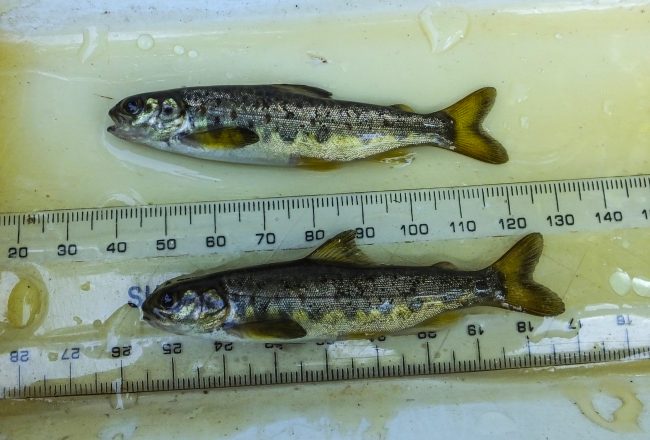
2017’s first salmon fry for the Trust, the excitement that the team gets from seeing little fish like these never fades.
Initial results from the lower catchment are encouraging and we will continue with the upper catchment later on this week. We carry out all the timed electrofishing first, there after we move on to semi and fully quantitate surveys. We do our best (weather depending) to match the survey dates to the previous year for continuity. We’re only a day out from last years surveys and with the weather on our side we’ll complete the timed surveys over the next fortnight.
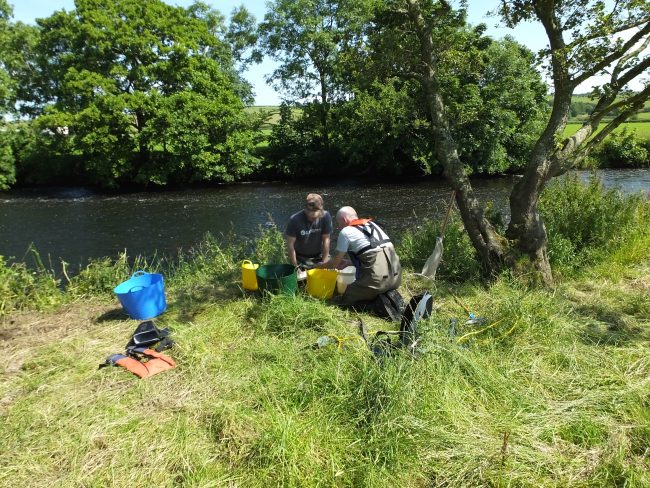
Counting the catch. Keeping a close eye on the fish on any day is important, but with temperatures in the high twenties warm water will become oxygen depleted very quickly. Frequent changes of water to keep fish cool and maintain high levels of available oxygen is absolutely critical on warmer days.
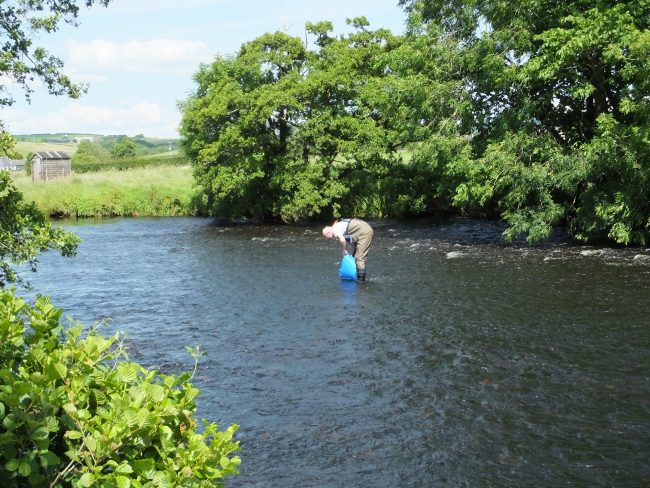
Jim releasing the fish back into the surveyed stretch.
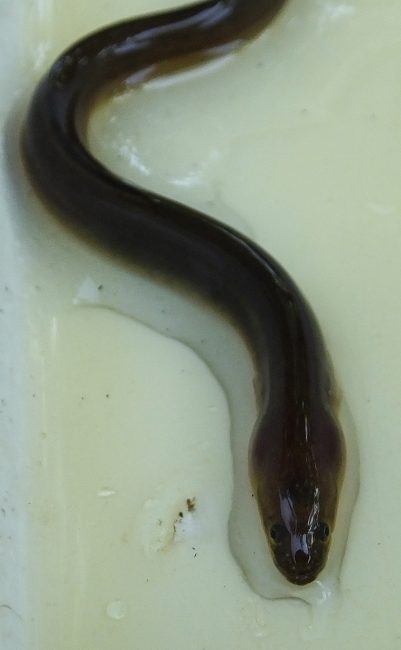
Eels were present at almost all sites in sizes varying from tiny elvers to some quite large specimens.
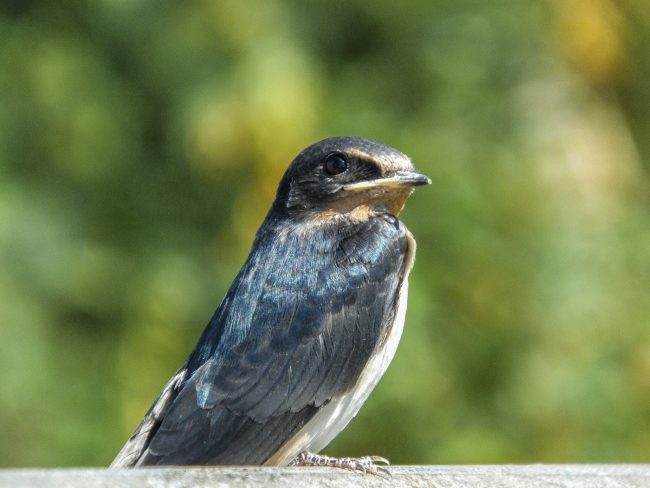
On our way back to the van from one of the sites we came across this swallow fledgling sat on a railing, unsure of itself we were able to approach quite closely however Mum and Dad weren’t happy so after a quick snap we pushed on.

